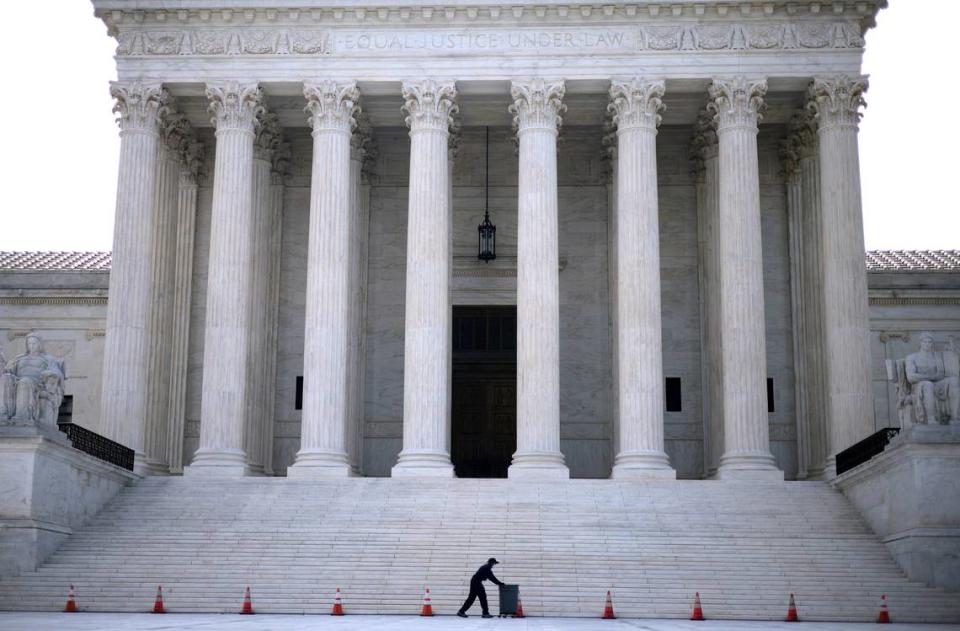The Supreme Court is grabbing more power, and it’s forgetting the common good | Opinion
- Oops!Something went wrong.Please try again later.
I don’t presume to be an expert in the law. What I’m doing, more than anything, is offering a layman’s lamentation for what I consider a Supreme Court bent on expanding its own powers, at the expense of the executive and legislative branches of the federal government.
In doing so, this court risks throwing the legal system as we know it into chaos, thereby undermining its role in promoting the common good.
In a major ruling on June 28, the Supreme Court took an ax to the power of federal agencies to interpret the laws they administer and ruled that courts should rely on their own interpretation of ambiguous laws. By a vote of 6-3, the justices overruled the landmark 1984 decision in Chevron v. NRDC — the 40-year old “Chevron doctrine.”
Under that doctrine, if Congress has not directly addressed the question at the center of a dispute, a court was required to uphold the agency’s interpretation of the statute, as long as it was reasonable.
The Chevron ruling became a target for those seeking to curtail the “administrative state,” who argued that courts, rather than federal agencies, should say what the law means. In his opinion for the majority, Chief Justice John Roberts concluded: “it thus remains the responsibility of the court to decide whether the law means what the agency says.”
The “agency” could be the Nuclear Regulatory Commission, the National Institutes of Health, the Agency for Toxic Substances and Disease Registry, EPA, FEMA, ICE, OSHA, VA, NASA, CIA, NSA, SEC, FAA, IRS, etc. All are agencies staffed by people with decades of formal science and technology education and training, as opposed to judges with, on average, none.
Now I suspect that many Americans will be lamenting Monday’s decision, Trump v. United States, where the Court decided the former president had some “presumptive immunity” for “official actions” outside his core constitutional powers, for which he had absolute immunity.
Two years ago this Supreme Court overturned Roe v. Wade, a decision that continues to rile up Americans on both sides of the issue. Interestingly, this decision is consistent with where the Court is heading with Chevron. In Dobbs v. Jackson Women’s Health Organization (2022), the court decided it will be up to the courts in each state to decide how a women’s reproductive health, the viability of her baby, or even the woman’s life should be considered in justifying a decision to terminate a pregnancy. So, here again, science takes a back seat to jurisprudence.
Not even PhDs in the “soft sciences,” such as history, are immune from proctoring by the courts. With their Bruen decision, the Supreme Court made the courts America’s firearm history experts. Justice Clarence Thomas, writing for the majority, wrote that for a firearm regulation to be justifiable, “the government must demonstrate that the regulation is consistent with the Nation’s historical tradition,” going back practically to the founding of the Nation.
Now today’s decision that a U.S. president has absolute immunity in the exercise of his “core constitutional powers,” does not, in my layman’s opinion, violate common sense.
What I find maddening, is the court trying to dance on the head of a pin over, whether in his remaining official acts, he has “presumptive immunity” for conspiring to overturn the 2020 Election.
The Supreme Court is punting the case back to the lower courts, where they can debate the issue, including what is definitive about “presumption,” until the 2024 Election either makes the question moot, or all the sturm and drang over the result will be muted.
I presume that even then we will be asking, what has this Supreme Court done for the common good?
Richard Badalamente was a senior analyst at the Pacific Northwest National Laboratory. Before that, he was a commissioned officer in the United States Air Force. He is currently a member of the Citizens Climate Lobby.


